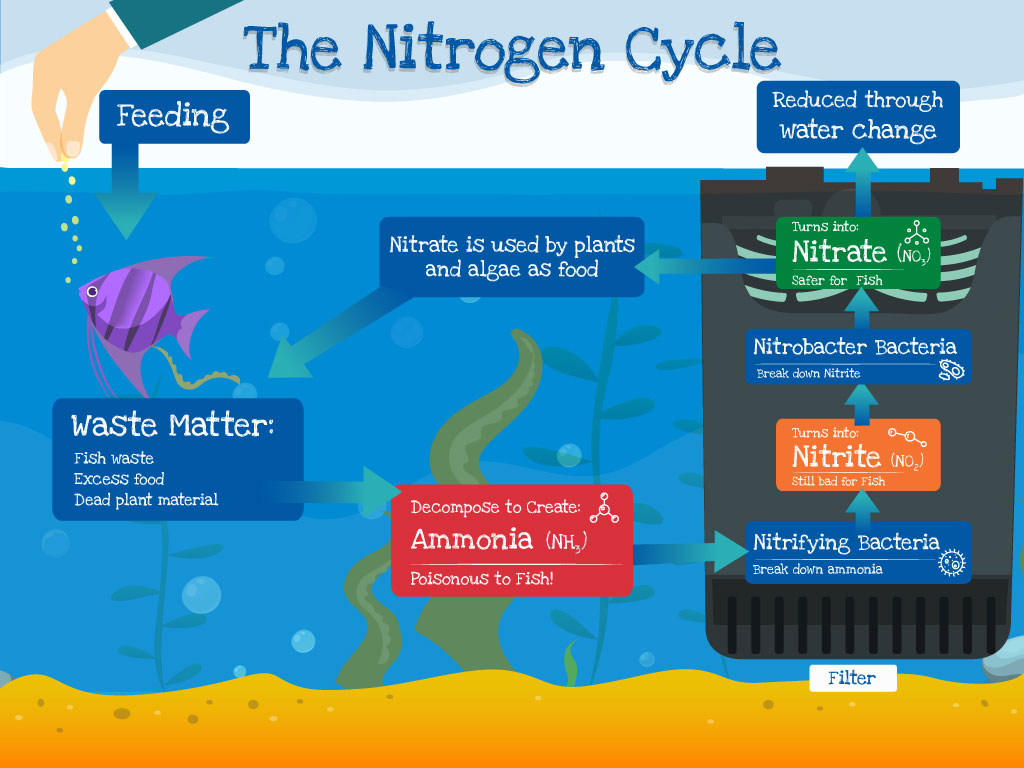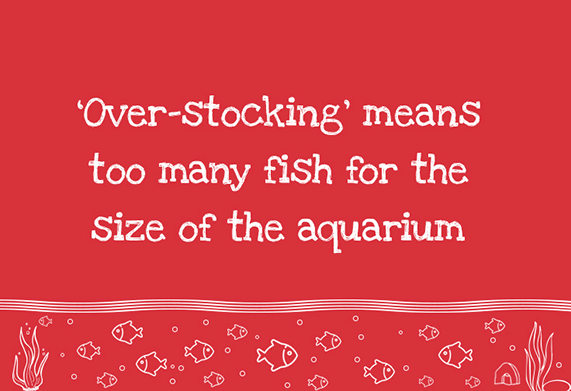Understanding the Nitrogen cycle
Before you add fish to your aquarium it’s important to understand how to keep the aquarium water clean and healthy enough for fish to live in.
The short video below talks you through this process, or read on for more.
The breakdown of fish waste; too much food and dead plant matter, causes ammonia and other poisons to build up in the water and kill your fish.
Because an aquarium is a ‘closed’ environment, harmful waste can quickly build up. There isn’t enough water to dilute or wash away the toxic compounds, unlike in a natural situation like a pond or river.
But there’s hope; as fish-keepers we can harness a natural process called the ‘Nitrogen Cycle’. Once established in an aquarium, it converts toxic waste into safer compounds.
Take a look at the image below to understand more about how this process works.

The Nitrogen Cycle is carried out by thousands of ‘Nitrifying’ bacteria that live and grow in the biological media of the aquarium filter. These bacteria take about eight weeks to grow and reproduce in the filter to large enough quantities to carry out their role in the Nitrogen Cycle. It’s during these early weeks, when there are few bacteria, that fish keepers often experience fish deaths caused by the build-up of invisible toxic compounds, known as ‘New Tank Syndrome’.
Ways to prevent New Tank Syndrome and encourage the Nitrogen Cycle:
- Add a bacteria-based filter starter product such as Fast Filter Start to speed up the cycle process.
- Start with a few, hardier fish varieties, and be cautious when adding new fish. A realistic scale for adding new fish is weeks and months, not days.
- Feed small amounts in the early days to reduce the amount of waste. Always remove any left over food to prevent it rotting and making the water toxic for your fish.
- Test your water with an aquarium test kit, so you know for sure how many of the invisible toxins are in your aquarium.
- Carry out weekly water changes every week for the first six weeks, to dilute and remove waste and toxins. You should aim to change 20% of your aquarium water volume each time.


